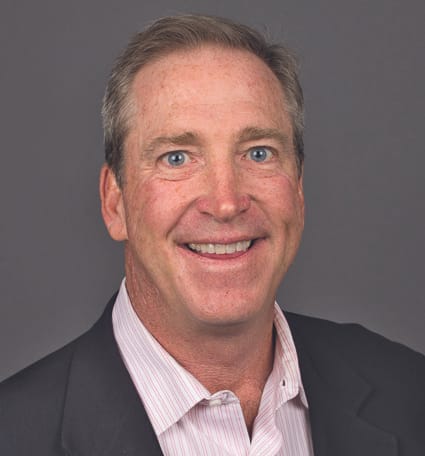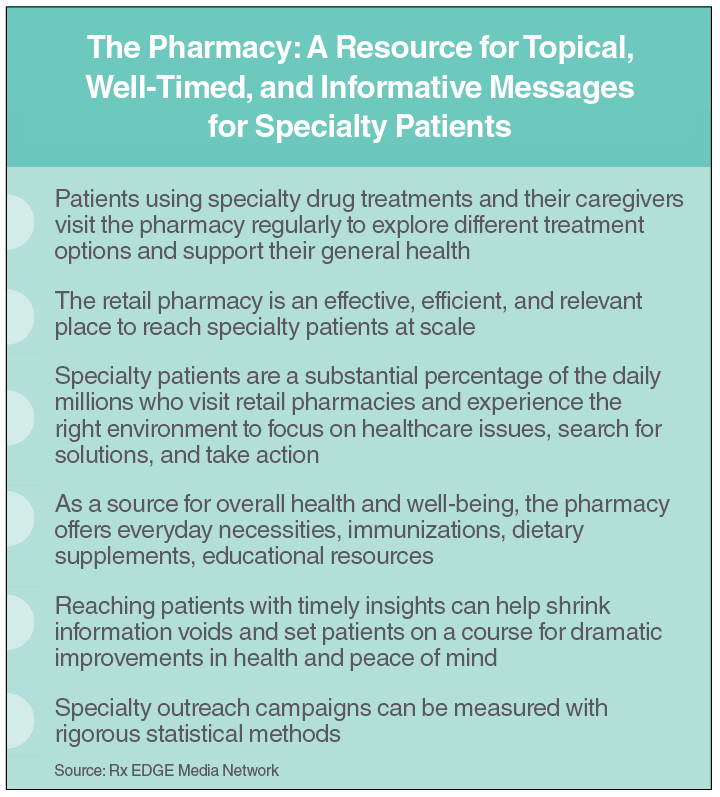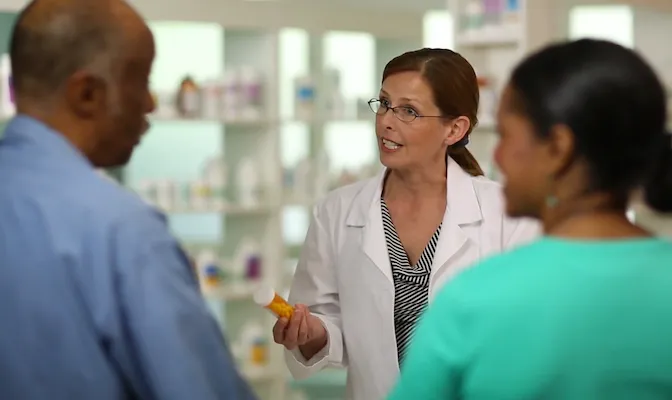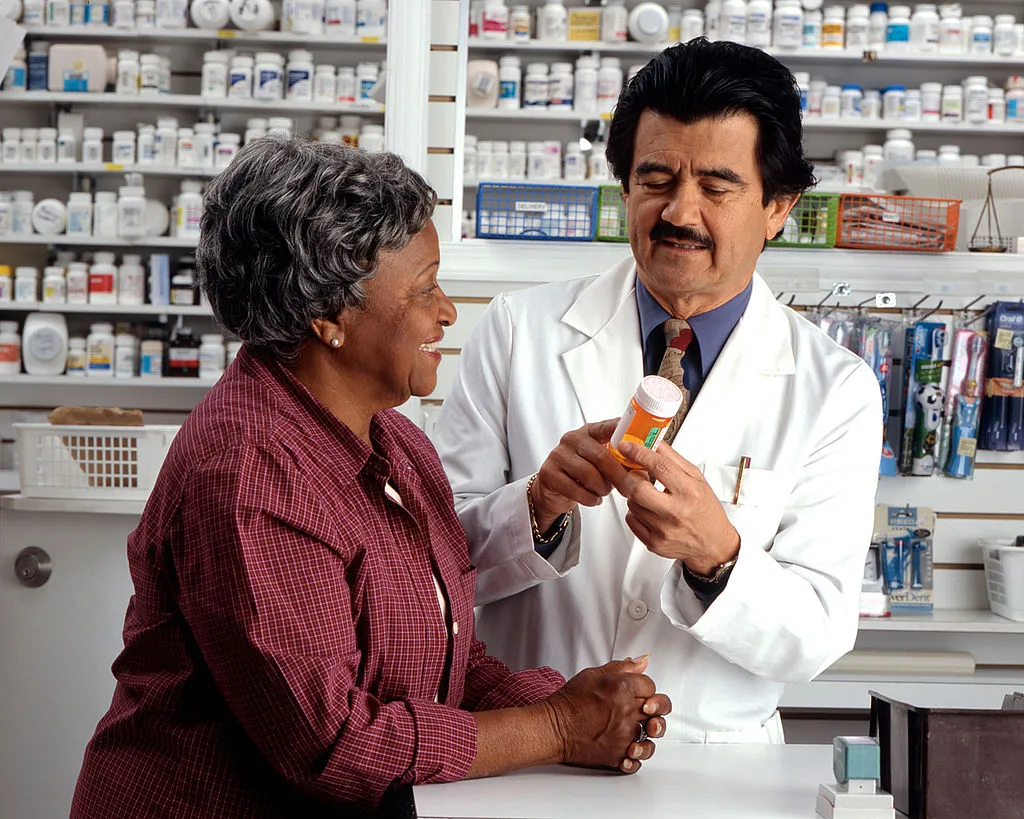NEW YORK — Consumers facing complex health conditions that are treated by specialty medications don’t need more ads. (Does anyone need more ads?) But compared to their neighbors, these patients are even more actively and consistently in a mindset of thinking about their health and finding new and better ways to manage wellness.

Jim O’Dea
And more than most consumers, specialty patients feel the effects of information voids. They may struggle with mysterious symptoms and wait years, or even decades, for a concrete diagnosis and treatment plan. Many have autoimmune conditions, whose flares are difficult to predict and manifest without obvious cause or warning. Others face an uncertain prognosis and unclear future. Their minds are tuned to ask questions and seek more knowledge about their own health, but credible information tailored to their specific concerns can be hard to find.
That’s why communicating with patients in the setting of a professional, comforting and accessible traditional pharmacy is emerging as a top marketing strategy for specialty pharmaceutical brands. The retail pharmacy is an effective, efficient and relevant place to reach specialty patients at scale. And it’s a great place to find patients receptive and eager to fill in those information voids that complicate their daily health.
Specialty is the new mainstream
We still use the name specialty, but the truth is that it has become much more mainstream than most people realize. Specialty isn’t just insulin and a handful of autoimmune or oncology drugs anymore. There are hundreds of specialty treatments in dozens of categories, accounting for 40% of the total U.S. pharmaceutical market, according to a 2017 Healthcare Distribution Alliance Research Foundation report.
The growing importance of specialty pharma means that more Americans than ever are thinking about complex, chronic conditions that typically require more than a traditional prescription or administration to manage. Patients on specialty treatments and their caregivers still visit the pharmacy regularly to explore different treatment options and support their general health. For example, over-the-counter analgesics are commonly used in conjunction with specialty rheumatoid arthritis (RA) treatments, and oncology patients use O-T-C treatments to help manage side effects.
This means specialty patients are a substantial percentage of the millions of people who visit retail pharmacies daily and experience what we call the Mindset Moment — the right environment to focus on health care issues, search for solutions and take action. Those individuals are looking for informative materials connecting their own experiences with the stories of patients like them, and finding answers for symptoms that often have mysterious or unpredictable causes.
Specialty patients are listening
We all face challenges when finding the right tone to set and channel to use when approaching patients with complex, uncomfortable and hard-to-treat conditions. It’s always important to be sensitive to a patient’s frame of mind. But I encourage everyone in the industry to be bold and take ownership of the important and meaningful ways that a topical, well-timed, informative message can help a suffering patient.
To put it simply: A patient with RA might not be happy to be at the pharmacy because he is more sore than usual. He may have a frown on his face as he walks up and down the analgesics aisle browsing the latest NSAIDs. But he’s going to be thrilled if he sees information that leads him to a new biologic, which could bring about a significant upgrade to his quality of life.
Why specialty messages belong in the pharmacy
Many pharma marketers may have shrugged off the retail pharmacy as a relevant media channel because specialty is often dispensed in nontraditional locations and delivered through the mail. But people who are on biologic drugs go to the pharmacy all the time for other things. Mom may have RA, but her son still needs his contact lens solution. That working professional with severe asthma? He also suffers from heartburn and heads to the pharmacy every month for O-T-C antacids. The next-door neighbor with plaque psoriasis picks up her allergy medication at the local pharmacy too. Not to mention that patients with long-term illness often go to the pharmacy even more due to side effects, comorbidities and a desire for general health resources such as immunizations. The pharmacy is actually an excellent venue to reach them.
The specialty market isn’t as concentrated as many think. The 2017 HDA Research Foundation report found that over 27,000 outlets dispense specialty pharmaceuticals in the U.S.
And for both specialty and traditional drugs, the effectiveness of pharmacy in-aisle messaging isn’t married to where that prescription is ultimately filled. Rx EDGE Media Network’s internal data shows that about one of every four patients who fills a traditional prescription after seeing in-aisle education will fill that prescription at a different pharmacy.
How the numbers add up
Addressing millions of potential patients with in-aisle messaging has a proven track record. We’ve provided consumers with information that has generated over 5 million verified incremental prescriptions.
Specialty is different, because the supply chain and distribution channels are somewhat different from conventional pharma. That means data sources are also different from those for traditional drugs, and today those data sources do not allow for matched-store analysis.
But specialty outreach can still be measured with rigorous statistical methods. Those include carefully studying pretest conditions to ensure an accurate baseline, measuring results in campaign test markets against control markets and studying post-campaign lift over a period at least as long as the campaign itself.
Making in-aisle messaging work for specialty requires working with media partners that will help marketers identify top-tier geographies for the patient demographics that match best with the condition and supply the best penetration into retail aisle space. And it requires custom measurement plans with a statistically valid matched-market approach.
Through strong retailer and specialty relationships, it’s still possible to collect the facts and generate detailed reports that include relative volume and percentage change in script volume and provide an overall return on investment.
From well-being center to enrichment hub
The retail pharmacy is already serving as a well-being center for patients with a wide variety of conditions that require specialty treatments. The pharmacy offers them everyday necessities, immunizations, dietary supplements, educational resources and contact with a trusted pharmacist.
Now it’s time for specialty to take advantage of the retail pharmacy’s potential to improve the targeting of its own campaigns, and to improve the lives of patients who need insights into difficult diseases and complicated ailments. In-aisle messaging gives specialty brands the chance to simultaneously focus on selected populations with high-indexing related conditions, and reach large numbers of spouses, parents, children and caregivers of affected patients.

Reaching patients with timely insights not only can help shrink information voids but can set patients on a course for dramatic improvements in health and peace of mind. It’s what you can do today with a retail pharmacy education campaign. And it’s another way specialty brands can establish themselves as leaders in health and wellness.
Jim O’Dea is president and chief executive officer of Rx EDGE Media Network. The company assists pharmaceutical brands in educating and acquiring new patients and increasing prescription product awareness through programs delivered in the retail pharmacy channel. He can be reached at jim.odea@rx-edge.com.









